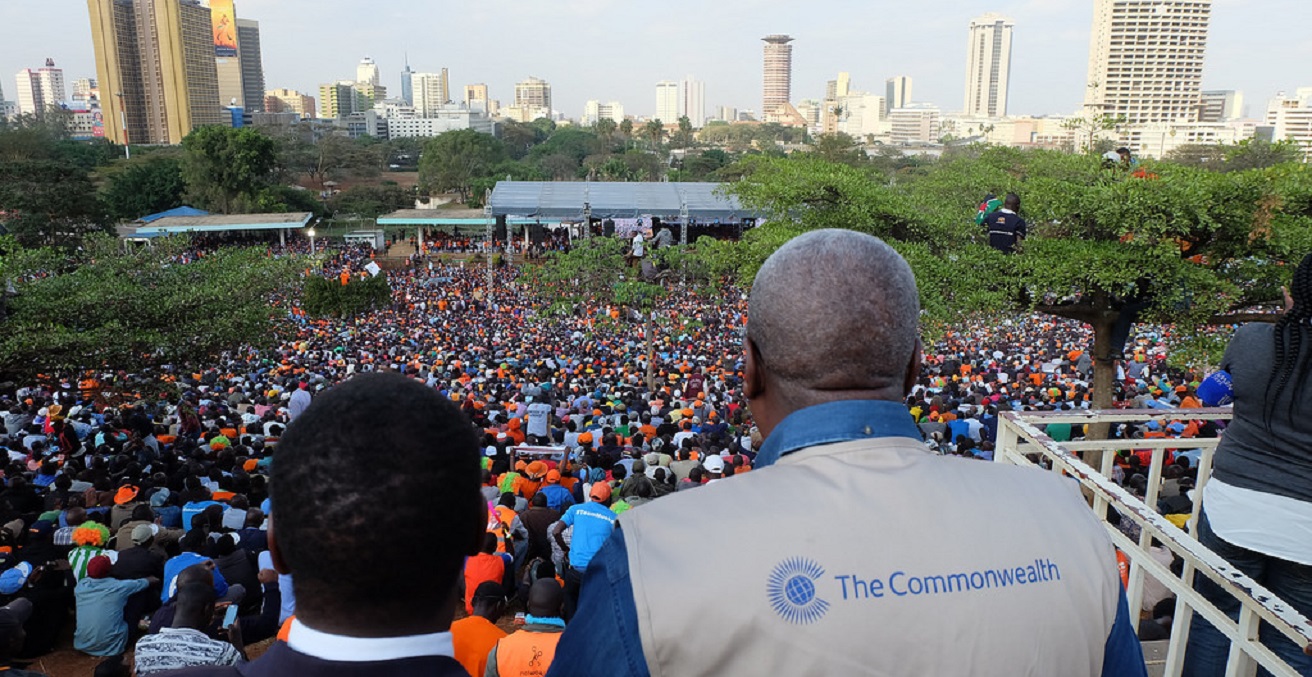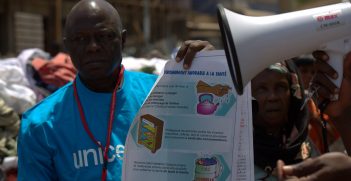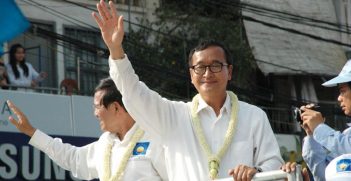Back to the Polls: What Was Behind the Shock Annulment of Kenya’s Elections?

As Kenya prepares for a second general election in three months, history suggests a new poll will not be enough to fix the flaws in the country’s governance.
Elections in Kenya are characterised by elite corruption, electoral fraud and the repression of the people. They grow out of a politics of rapacious elites who concentrate their energies on the looting of state resources in well-nigh flagrant fashion, using violence and intimidation to avoid any possible accountability.
This occurs from the highest levels of society. Both President Uhuru Kenyatta, and his deputy, William Ruto, were indicted by the International Criminal Court for crimes against humanity (for organising and supporting the huge violence during elections in 2007–08): the cases collapsed as witnesses declined to come forward or mysteriously died.
Impunity accompanies the looting of the state, and according to a 2008 report by Human Rights Watch (HRW), it lies at the heart of Kenya’s governance. Impunity for politicians suspected of state plunder has been a national tradition in Kenya, and it both “raise[d] the stakes” for incumbents and, as transgressors went unpunished, “contributed to its continued use”.
Aside from supposed spontaneous tribalism, violence has taken three main forms. The first is manipulation of the poor or unemployed. As Daniel Howden instanced in 2013: “political barons marshalled armies drawn from the young and unemployed” and set them against their rivals with guns and machetes.
Another form has been assassination of prominent or key figures. Pio Gama Pinto and Tom Mboya were killed in the early years of independence, but the torture and killing of Charles Msando was carried out 10 days before last month’s election.
Msando was in charge of the electronic system for transmitting results from polling stations, and he had reportedly complained to police of death threats for weeks. His gruesome fate was a clear warning to other such personnel to stay in line.
Violence has also taken the form of premeditated, direct brutality by police. They killed “at least 28 people” just after the voting in August. Killings totalled some 1,300 in 2013, with reputable groups reporting that police had directly targeted people uninvolved in demonstrations, firing live rounds and gas canisters into the flimsy shacks of the poor at night, well after unrest had ceased.
The costs of presidential elections in Kenya are outstandingly high. The country’s treasury estimated the polling in August would cost USD$480 million (AUD$597 million). Wealth in these conditions is almost a form of violence in itself. President Uhuru Kenyatta stood at the system’s pinnacle. He had acquired what was termed the fabulous wealth of his father, President Jomo Kenyatta.
Corruption, elitist tribalism and electoral fraud are interlinked, and 2017 had its precursors. When, late in the 2007–08 election, it seemed that Raila Odinga, a populist Luo candidate, was winning, the old guard around President Mwai Kibaki, set about fiddling the result. Glaring disparities were evident in the voting figures released at constituency level and those presented by the electoral commission in Nairobi.
Kibaki was declared winner by just 232,000 votes and hurriedly sworn in. The group known as the Mount Kenya Mafia has, as noted by Kenyan journalist, John Githongo, “a huge network of civil servants, intelligence agents, generals and police chiefs to do their bidding.” The bidding of Kibaki then and Uhuru Kenyatta now.
The August election appeared to go well. Donors had spent some USD$24 million on an electronic vote-tallying system intended to prevent interference. On 11 August, the electoral commission announced that Kenyatta had won another five-year term with over 54 per cent of the vote. Various observer groups, including the Carter Centre, led by ex-US Secretary of State John Kerry, announced that they had found no evidence of significant fraud. Congratulations poured in. Departing Kenya, Kerry praised the electoral commission for doing “an extraordinary job”, and he even admonished the opposition to “get over it and move on”.
Raila Odinga, leader of the opposition National Super Alliance (NASA), thought differently. On 18 August he submitted a petition asking the Supreme Court to annul the vote. He claimed that nearly half of all votes cast had been tampered with; secret, unofficial polling stations had transmitted false votes to Nairobi; NASA’s official observers had been expelled from polling stations in Kenyatta’s strongholds. On 29 August, the registrar of the Supreme Court reported that some five million votes were not verified.
Soon after, the six-judge bench of the Supreme Court, in a four-two decision, ruled that the voting had been hacked and manipulated in favour of the incumbent. The commission had “failed or neglected or refused to conduct the presidential election in a manner consistent with the dictates of the constitution.”
The electoral commission, specifically, had committed “illegalities and irregularities”. The election was invalid, and they ordered a new vote within 60 days. The court would release its full report in 21 days.
Kenyatta said he “respected” the decision, but he also regretted that “six people have decided they will go against the will of the people”. Many noted that the courts in Kenya had long been subservient to the president. Odinga hailed an “exceptional example for all of Africa.” There were many “fundamental decisions” that now had to be made, including “who will conduct the next election?” It was clear that “the entire electoral commission is rotten.”
The past and the future
It will be difficult for Odinga, NASA and poor Kenyans to follow Kerry’s glib ‘time to move on’ direction. The roots of the present conflict lie some 60 years deep in Kenyan society: in the ascendancy of loyalist elites in the last years of settler colonial Kenya. From the 1940s to 1963, a new rising rich peasantry and aspirant rural capitalist class were assisted by colonialism, to act as a sociopolitical bulwark against a poor, landless peasantry in the central highlands.
Not for the first or last time, colonialism misread the situation badly: rather than being “the leader to darkness and death”, Jomo Kenyatta was trying to fend off a poor peasant uprising he correctly anticipated. Their deeply inequitable struggle for land and freedom represented the losing side in the undeclared civil war in the highlands.
The struggle became overt when the British declared a state of emergency in October 1952 and attacked the peasant freedom movement on various fronts. One was psychological, in the name ‘Mau Mau’, intended to besmirch and weaken the 20,000 men and women in the forest wars against well-equipped colonial forces. Appeals to supposed civilised values were also intended to isolate the approximately 1.5 million people thought to have proclaimed allegiance to the movement.
Jomo Kenyatta was released from banishment to become extremely rich, and Uhuru is his inheritor. Oginga Odinga became his deputy, seen as his likely successor. Kenyatta and Odinga represent the poles in Kenya’s conflict. Much more than a re-run of the August poll will be necessary to end the violence that has lasted so long and runs so deep.
Professor Kenneth Good is an honorary fellow in global studies at RMIT. He was previously professor of political studies at the University of Botswana, 1990-2005.
This article is published under a Creative Commons Licence and may be republished with attribution.





